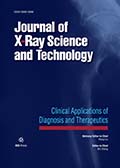Authors: Xue, Qian | Yang, Xiao-Han | Teng, Gao-Jun | Hu, Shu-Dong
Article Type:
Research Article
Abstract:
OBJECTIVE: To investigate relationship between the diffusion indexes of corticospinal tract (CST) and the neurological motor outcomes in chronic pontine stroke patients. METHODS: Diffusion tensor imaging (DTI) is performed in 27 patients with chronic pontine stroke. Fractional anisotropy (FA) values along the CST area, the track number, and the CST length are measured. Neurological and motor outcomes are evaluated based on Fugl-meyer (FM), National Institutes of Health Stroke Scale (NIHSS), Barthel index (BI), and modified Rankin scale (mRS) scores. The relationships between FA ratios (rFAs) in the CST of stroke subjects and their clinical motor scores are analyzed
…through Spearman’s correlation analysis. Then, diffusion tensor tractography (DTT) is performed to show the injury degree of CST. RESULTS: First, FA values are decreased in the infarct area, cerebral peduncle, posterior limb of the internal capsule, and precentral gyrus compared with those in the contralateral side. The number of CST is decreased in the ipsilateral side of the infarct. Second, rFAs in the cerebral peduncle, posterior limb of the internal capsule, and CST rnum correlate positively with FM scores (r = 0.824, 0.672, 0.651, p < 0.001) and negatively with mRS scores (r = –0.835, –0.604, –0.645, p ≤0.001). Third, the injury degree of CST correlates negatively with FM scores (r = –0.627, p < 0.001). CONCLUSIONS: The study demonstrates that rFAs in the cerebral peduncle, posterior limb of the internal capsule, and CST rnum associate with motor outcome, suggesting that DTI may be applicable for outcome evaluation.
Show more
Keywords: Corticospinal tract, diffusion tensor imaging, magnetic resonance imaging, pontine stroke
DOI: 10.3233/XST-200817
Citation: Journal of X-Ray Science and Technology,
vol. 29, no. 3, pp. 477-489, 2021
Price: EUR 27.50





